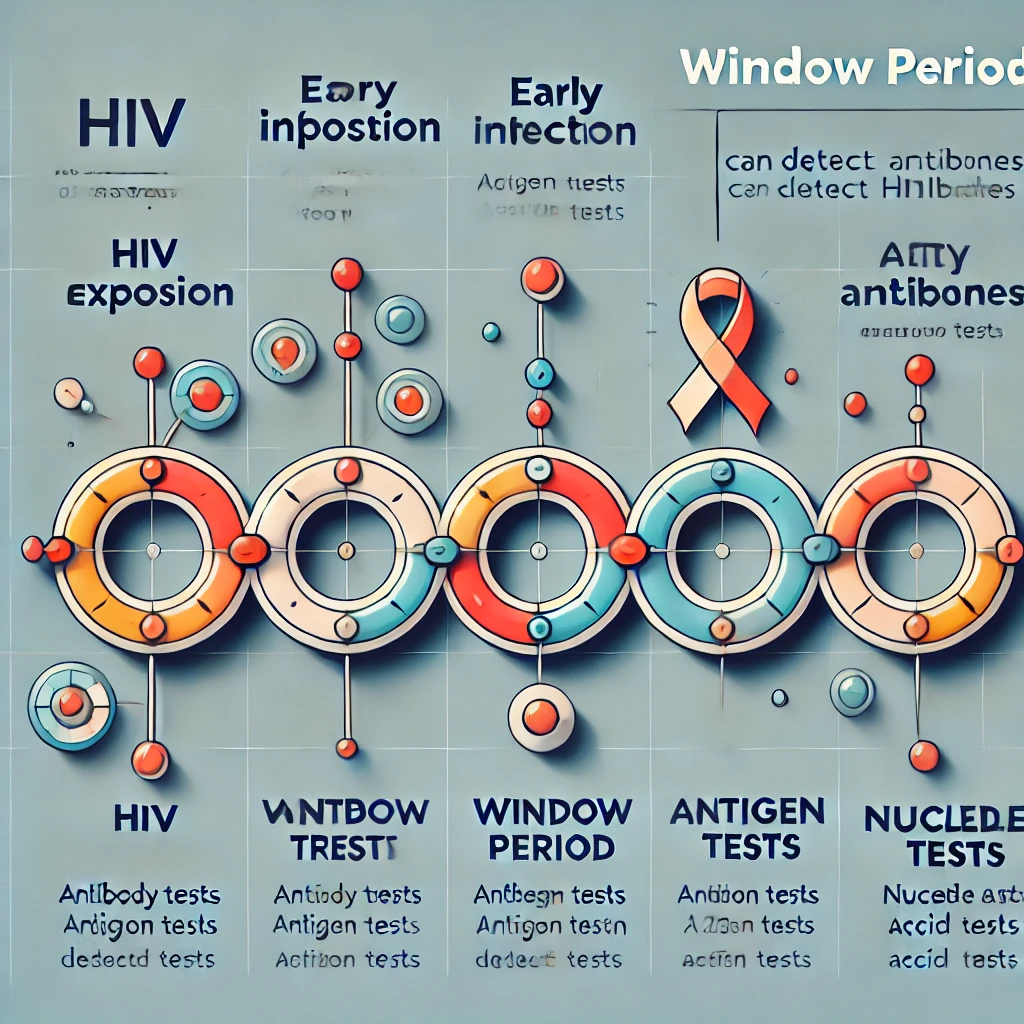The “window period” in HIV testing refers to the time between when a person is first infected with HIV and when a test can accurately detect the virus in the body. During this period, an individual may have HIV, but their test results could still come back negative. This is crucial for understanding the limitations of early HIV tests and when to follow up with additional testing to confirm results.
Key Stages in HIV Testing
- HIV Exposure and Infection
- When a person is exposed to HIV, the virus begins replicating in the body. Initially, it is undetectable by common HIV tests because the immune system hasn’t yet produced enough antibodies, and the viral load may still be low.
- The Early Infection Stage
- This is the stage where the virus rapidly multiplies, but the body’s immune response hasn’t kicked in enough to produce antibodies detectable by most tests. The virus itself, however, can be detectable through more advanced testing methods like nucleic acid tests (NAT).
- The Window Period
- This is the gap between the initial infection and the point where an HIV test can detect the virus or antibodies. Different types of tests have varying window periods:
- Antibody Tests: Usually take about 3–12 weeks to detect antibodies produced by the immune system in response to the HIV infection.
- Antigen/Antibody Combination Tests: Can detect HIV as early as 2–6 weeks after exposure. They work by identifying both HIV antigens (proteins) and antibodies.
- Nucleic Acid Tests (NATs): Detect HIV infection earlier than other tests, often within 1–4 weeks after exposure. However, these tests are more expensive and not commonly used for routine screening.
- This is the gap between the initial infection and the point where an HIV test can detect the virus or antibodies. Different types of tests have varying window periods:
- Post-Window Period
- Once the window period has passed, standard tests will detect the presence of the virus. It is important to get tested again if the initial test was taken during the window period, especially if there was recent risk exposure.
Why Understanding the Window Period is Important
The window period is essential in HIV prevention because a person can unknowingly transmit the virus to others if they believe they are negative when, in fact, they are in the early stages of infection. Knowing about the window period ensures more accurate testing, especially after risky behaviors or potential exposure.
When to Get Tested
It is recommended that individuals who believe they have been exposed to HIV wait for the appropriate time before taking an antibody or combination test, to reduce the likelihood of a false-negative result. If there’s a high risk of exposure, a NAT test may be suggested, but it is important to discuss testing options with a healthcare provider.
This article highlights the importance of understanding the window period in HIV testing to ensure timely and accurate results.



